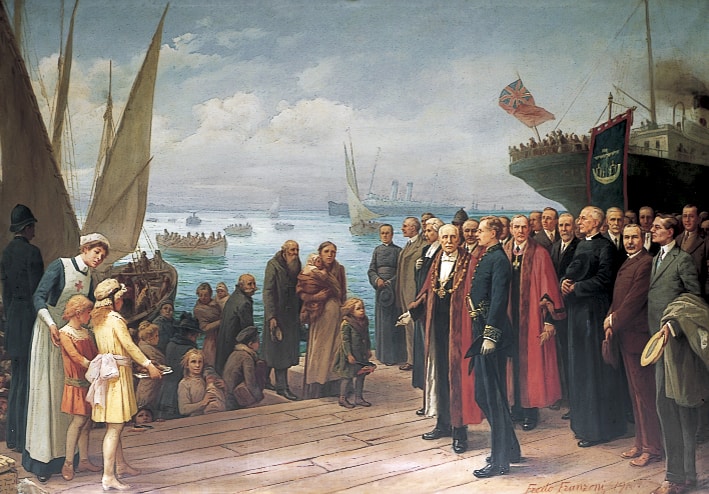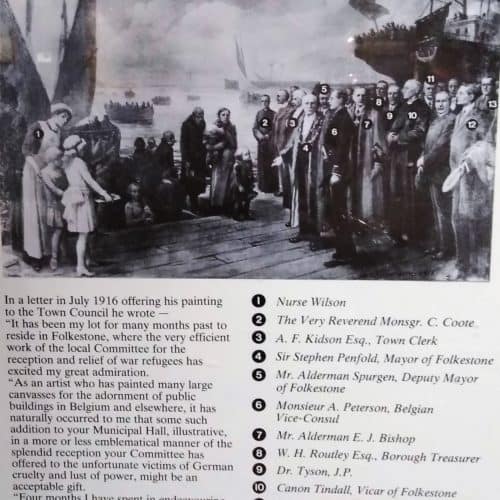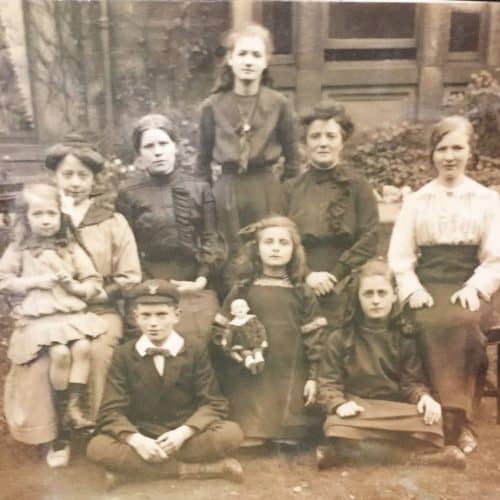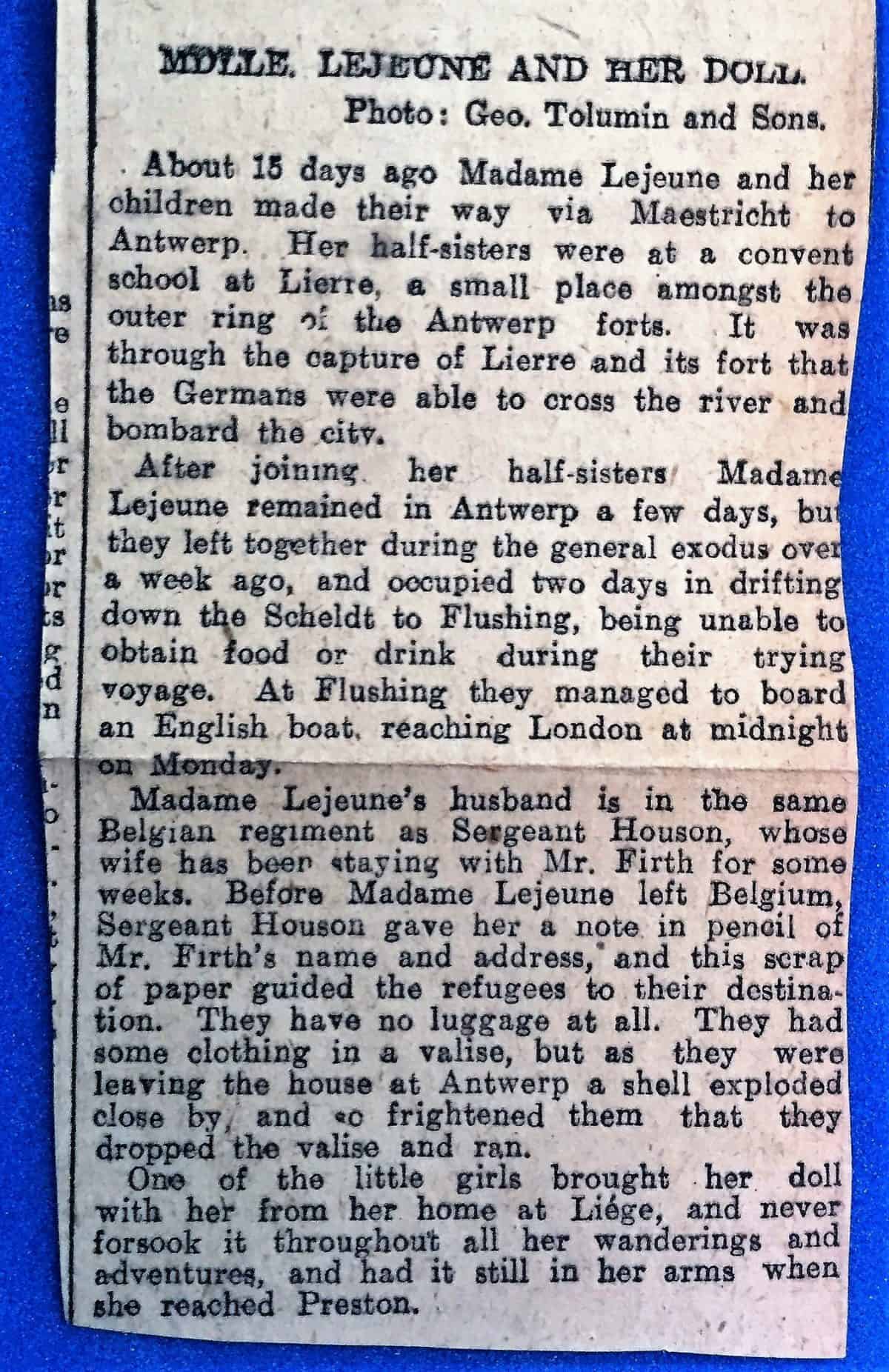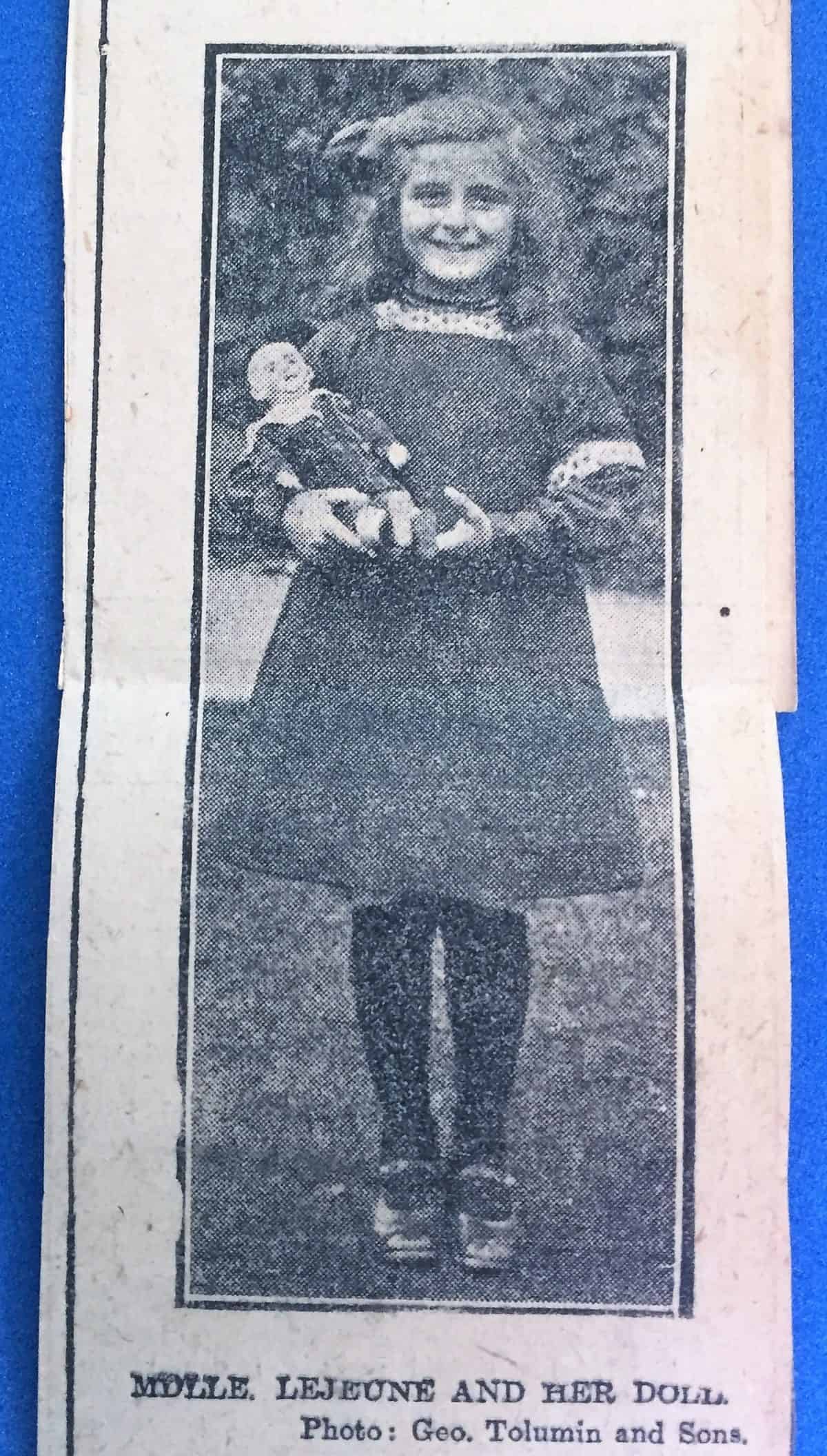WW1 1: new arrivals to Folkestone
This oil painting is called 'The Landing of the Belgian Refugees.' It shows the arrival of Belgian refugees in Folkestone in the autumn of 1914.
Millions of men, women and children were caught up in the fighting in Belgium in the first weeks of World War 1, as the German army overran their towns and cities.
Many were injured, or made homeless due to the shelling of their homes, and decided to flee to safety. Sometimes they had almost nothing left except the clothes they were wearing.
They came in fishing boats, coalers (coal ships), and anything that could float, as well as on the larger ferries.
They were quickly offered homes, food, medical treatment and work. A newspaper was set up to help them find missing relatives, called Le Franco-Belge de Folkestone.
This picture was painted by an Italian-born Belgian refugee Fredo Franzoni (1878-1943). After witnessing German atrocities in his home town of Charleroi, he fled to Folkestone in 1914 with his wife and family.
Fredo was already a well-known portrait artist in Belgium. He dedicated 4 months to completing this impressive oil painting, which stands approximately 3 metres wide by 2 metres high.
In 1916 it was presented to the town as a thank you for the help and kindness shown to thousands of Belgian refugees by the people of Folkestone.
Interestingly, the painting does not recall a specific event. In reality, there wasn't such a large and formal welcoming committee. It wouldn't have been possible to welcome all the refugees like this, because more than 64,000 passed through Folkestone from August 1914 onwards. One day in October 1914 there were over 16,000 arrivals.
So instead of recording an actual event, the artist said it is ‘illustrative in an emblematic manner’ of the warm welcome they received.
Fredo was keen to include the faces of many leading Folkestone citizens and those connected with war relief work.
Can you spot these people?
- The Belgian refugees (on ships and small boats and stepping ashore)
- Nurse Wilson (left)
- The Mayor of Folkestone (wearing his chain of office)
- The Belgian Vice-Consul, Adolph Petersen, wearing a smart uniform and sword (who set up the Belgian Refugees’ Committee in Folkestone which he ran with his wife Mary)
- A silk banner displaying the coat of arms of Folkestone (now in the museum collection)
- The artist’s wife and children (a newspaper of the time mentions he included them in the painting, but who do you think they are?)
The image below shows information about important people in the painting.
Missing from the painting are the many Folkestone families, including those of poor fishermen, who were among the first to welcome the refugees into their homes.
Why do you think the artist chose to include the people he did, and not the poor fishermen and their families, even though they also helped?
Over a quarter of a million Belgian refugees fled to Britain in World War 1, and were welcomed by families across the UK. Thousands stayed in Folkestone, living with local families, or staying in hotels and guest houses which were empty because of the war.
Fascinating fact
One of the Belgian refugees was a travelling acrobat whose luggage included the cannon he used to fire his wife into the air!

